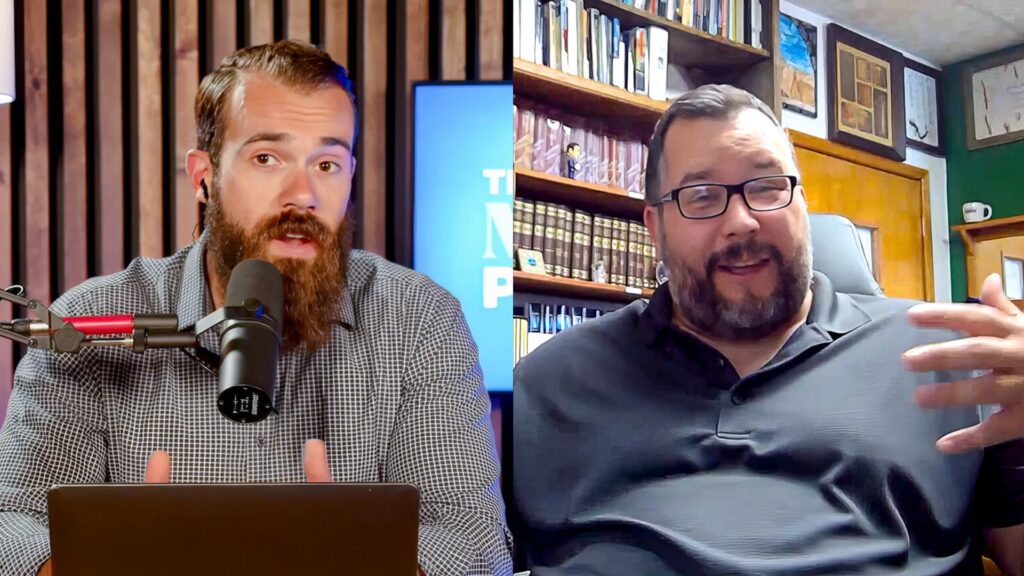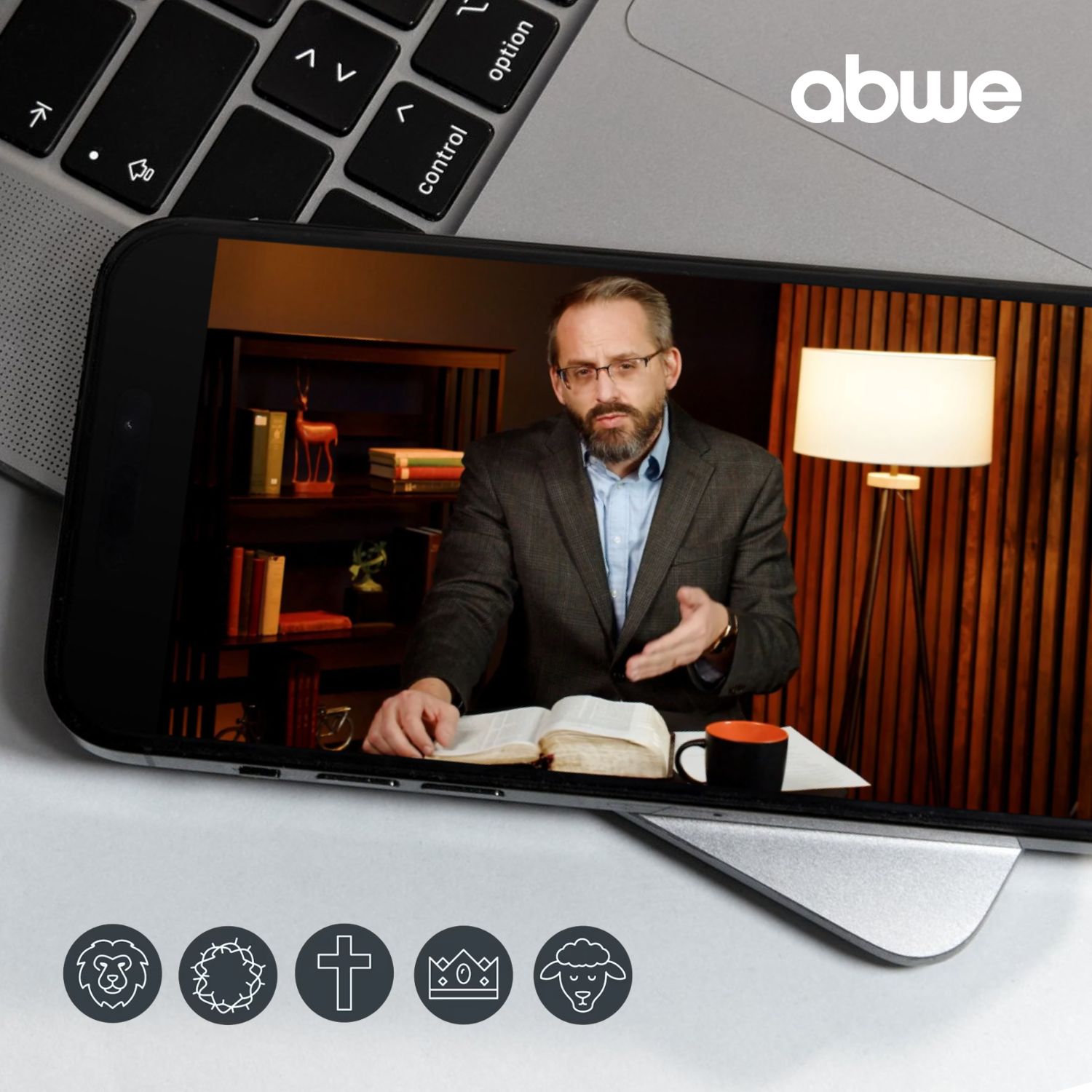Jesus’ high priestly prayer in John 17 is worthy of our attention. As John records it, Jesus starts his prayer by praying for himself (17:1-5), then he prays for his disciples (17:6-19), and finally he ends his prayer by interceding for all who would believe the message of the Apostles (17:20-26). The middle of Jesus’ prayer for his disciples is significant for understanding how the missionary should view the word and mission.
Jesus prays in verse 17: ‘Sanctify them in the truth; your word is truth.’ And then He gives the reason for his prayer request in verse 18: ‘As you sent me into the world, so I have sent them into the world.’ Jesus is praying that his disciples would be consecrated for the mission to which he is calling them, and that applies to us in every generation, especially to missionaries, because the apostolic task and commission is yet unfinished. To execute the mission of going into the world (v. 18), the sent-ones must be sanctified (v. 17). This begs a few questions: What is the goal of being sanctified? What tool does the Father use for this sanctification?
The telos
The term “sanctification” is commonly used for the process of being made holy, or more precisely, the process of being set apart. Being set apart has two sides: it requires leaving and cleaving, as it were. We are set apart from the world, the devil, and our sin nature, but we are only halfway there in the setting apart process; we need to go the rest of the way and be set apart for and to God. We can only serve one master, which means having no master is not an option. There is no neutral ground in our allegiance and loyalties. God is the goal of our sanctification. He sets us apart from the world, self, and the devil as a possession for himself. God’s telos—goal—of our sanctification is for holy service to himself.
When Jesus prays for his disciples, ‘Sanctify them’ (v.17), He is praying that the disciples would be set apart for something. What is that something? He highlights his purpose in praying this in the next verse: to be sent into the world on a mission just as the Father sent him on a mission (v.18). In other words, Jesus is praying that his disciples would be set apart for the holy missional purposes of God—consecration to engage the world with the gospel. Commenting on verse 17, D.A. Carson makes the helpful argument: ‘In John’s Gospel, such “sanctification” is always for mission.’1
This request of Jesus was not solely for those eleven disciples (Judas notwithstanding), because he goes on to say to the Father in verse 20 that he is not only interceding for the 11 in his midst, ‘but also for those who will believe in me [that is Jesus] through their word.’ Clearly, the application of Jesus’ prayer is for all Christians, and especially for those whose God-ordained vocation and calling in life is to literally go into the world, crossing cultures, taking the gospel to the unevangelized and undiscipled.
How often does our talk of personal sanctification revolve around being a ‘better’ (i.e., well-behaved) Christian? We hate the consequences of sin and how it hurts us or others, and rightfully so. Thus our motivation for sanctification often revolves around experiencing more joy and freedom from sin. This is not a bad motivation, but is it the only motivation? The sum of the Law and the Prophets is to love the Lord our God with all that we are, and to love our neighbors as ourselves (cf. Matt. 22:37-40). Christ fulfilled this Law for us, and now by his indwelling Spirit he enables us to progressively live in the same manner.
Could it be, however, that our motivation for sanctification is often only half full, focused exclusively on the vertical? Maybe the reason we do not view the purpose of sanctification as mission is because we are not broken enough over the plight of our global neighbors. Maybe if we prayed that God would increase our love for our global neighbors, we would start viewing sanctification as a means to a missionary end. If we are so enamored by the gospel’s sanctifying power for us, so much so that we spend hundreds and even thousands of dollars on tuition, books, resources, and conferences celebrating the gospel for us, does not our motivation for gospel-centered sanctification seem disproportionate?
The tool
What is this tool that God uses to train and consecrate his servants for going into the world? The truth. Not truth, generically. The truth, with a definite article. Jesus then emphatically identifies what embodies the truth in the very next clause: ‘your word is truth’ (v. 17). Here Jesus refers to the truth as the Father’s word, yet earlier in the evening Jesus identified himself as the truth: ‘I am the way, and the truth, and the life. No one comes to the Father except through me’ (John 14:6).
This parallel of truth language suggests different levels. The Word of God is the truth (17:17) just as sure as Jesus is the truth (14:6). Mutually interpreting, it seems, the Christ-centered Scriptures are the truth about Christ, who is the truth. God sanctifies his servants for their missions through saturating them in the Christ-Centered Word.
This reality that the Word of Christ should be front and center in how disciples are sanctified is underscored by Christ’s final instructions to his disciples in Luke 24. On the road to Emmaus, Jesus explained to them everything written in the Law of Moses, the Psalms, and the Prophets that pointed to him:
And beginning with Moses and all the Prophets, he interpreted to them in all the Scriptures the things concerning himself. . . . Then he said to them, ‘These are my words that I spoke to you while I was still with you, that everything written about me in the Law of Moses and the Prophets and the Psalms must be fulfilled.’ Then he opened their minds to understand the Scriptures that the Christ should suffer and on the third day rise from the dead, and that repentance and forgiveness of sins should be proclaimed in His name to all nations (Luke 24:27, 46-47).
Now, consider the historical and literary context: What famous event follows Christ’s instructions to his disciples to look for him in the Old Testament as he fills up the Torah, the Prophets, and the Wisdom books? The next major event that followed his teachings here and preceded his final ascension into heaven was the Great Commission. In Matthew 28:18-20 Jesus gives the Great Commission: ‘All authority in heaven and on earth has been given to me. Go, therefore, and make disciples, baptizing them in the name of the Father and of the Son and of the Holy Spirit, teaching them to observe all that I have commanded you. And behold, I am with you always to the end of the age.’
So, when Jesus gives the command to make disciples of all nations by teaching them to observe all that he commanded, he is not only talking about his parables or the Sermon on the Mount; he is also talking about everything he taught them about himself from the Old Testament. And surely the Messiah-centered hermeneutics lessons he had just imparted to the disciples (that made their hearts burn) on the road to Emmaus were ringing loudly in their ears when he gave them the Great Commission not too long afterward. In imitation of Christ, the Apostles demonstrably used a Christ-centered lens in looking at the Old Testament (Acts 3:18, 22-24; 10:43; 17:2-3; 26:22-23).
All of the inspired Old Testament Scriptures point to Christ. Paul reminds Timothy that these Scriptures should lead to faith in Christ: ‘from childhood you have been acquainted with the sacred writings, which are able to make you wise for salvation through faith in Christ Jesus’ (2 Tim. 3:15; cf. 1 Pet. 1:10-11). Jesus himself claimed that the Scriptures testify about him (John 5:39-46), and he even scolded his disciples for not knowing things they should have known.
Matthean scholar Patrick Schreiner helpfully states regarding the significance of the Great Commission in Matthew’s narrative: ‘The Great Commission is predicated on the narrative preceding it.’2 Schreiner explains: ‘Matthew functions as the scribe who learned from his teacher and sage how to make disciples by illuminating how Jesus fulfills the old.’3 Schreiner also points out:
Matthew prominently presents Jesus as a teacher (διδάσκαλος) and instructor (καθηγητής). The later term is unique to Matthew and portrays Jesus in the role of a tutor (23:10). Jesus therefore has a unique instructor-student relationship with his disciples in Matthew. Matthew refers to Jesus as a ‘teacher’ implicitly or explicitly twelve times.4
As Christ discipled Matthew (and the other disciples), he was training him how to write, instruct, and teach as a scribe so as to bring out the kingdom treasures of the good news that Christ fulfills and fills full the Old Testament laws, judgments, promises, types, and shadows. Schreiner compellingly argues about the identity of Matthew as a trained disciple:
Matthew is the discipled scribe who narrates Jesus’s life through the alternation of the new and the old. The image I employ has its source in Matt. 13:52: ‘Therefore every scribe who has been trained for the kingdom of heaven is like a master of a house, who brings out of his treasure what is new and what is old.’ . . . The word usually translated as trained (μαθητευθείς) is related to the Greek word for disciple (μαθητής). Matthew’s verse could therefore be translated: ‘Therefore every discipled scribe for the kingdom of heaven is like a master of a house, who brings out his treasures new and old.’ Jesus tells them that a scribe (someone who works with texts) who becomes a disciple (following Jesus as a teacher of wisdom) can produce great things for the kingdom of heaven.’5
Scribes functioned in four main ways, which Matthew himself certainly employed. Schreiner states, ‘Though it can be tempting to think of scribes merely as those who wrote, most scribes in both Matthew’s time and before Matthew’s time engaged in at least four activities that mirror and illuminate Matthew’s composition: (1) learning, (2) writing/interpreting, (3) distributing, and (4) teaching.’6
Though the Great Commission is the mission of the church universal, yet for those who are specifically sent into the world as missionaries to the unreached peoples, to reveal the hidden treasures of Christ filling full the plan and promises of God is part of the disciple-making task. To be sure, truncating the Great Commission to merely instructing new converts how to better obey Christ’s rules to be better Christians completely misses the point. We have the privilege to train the nations to keep, observe, guard, and obey the holy, awesome Word of Christ, that the better Adam, the better Abraham, the better Moses, the better Israel, and the better David has made a way for sinners to be adopted as sons of God. Jesus is the Desire of all nations. The task of making disciples in the Matthean Great Commission sense surely expects the ‘sent one’ to be trained in explicating the excellencies of Christ in all of Scripture, as a missionary-scribe, a missionary-theologian.
This Christ-centered interpretive paradigm in which Jesus educated his disciples is essential for the establishment and maturity of Great Commission churches in every generation. If our disciple-making, church-planting strategies, and leadership development do not include doing what Jesus did with the Old Testament, then our Great Commission discipleship remains unfinished. Church leadership remains embryonic until the pastor is competent to teach. Teach what? All the Scriptures.
Does it not seem reasonable that a competent disciple-maker should emulate how Christ instructed his disciples on the road to Emmaus to understand the Christocentric Word before giving them the Great Commission? Does it not seem sensible that a Christian leader should follow the Christocentric pattern of teaching that the Apostles model in the New Testament? Our theology drives our methodology, and if we believe the Bible alone is effective and sufficient to bring sinners to salvation in Christ and sanctify justified sinners into Christ’s image, then why do so few missionaries value biblical/theological training in their disciple-making efforts? The power is in the seed, not the seed-thrower. A sower may be well-seasoned in many other skills, but those are ultimately inconsequential when it comes to liberally throwing seed onto the soil. Granted, the sower may well discern where the fertile soil might be, but in general, the wise sower knows that there can be no harvest without dissemination because only the seed can produce life. No other agricultural methods can substitute sowing.
1. D.A. Carson, The Gospel According to John, 566.
2. Patrick Schreiner, Matthew, Disciple and Scribe (Grand Rapids: Baker, 2019), 188.
3. Schreiner, Matthew, 8.
4. Schreiner, Matthew, 15-16. See Matthew 8:19; 9:11; 10:24, 25; 12:38; 17:24; 19:16; 22:16, 24, 36; 23:8; 26:18.
5. Schreiner, Matthew, 9-10. Emphasis in original.
6. Schreiner, Matthew, 21-2.
This article is an excerpt from the author’s recent book, The Missionary-Theologian.





